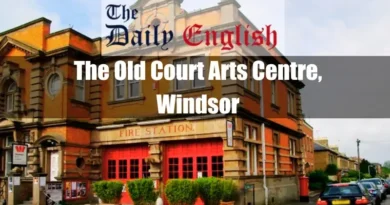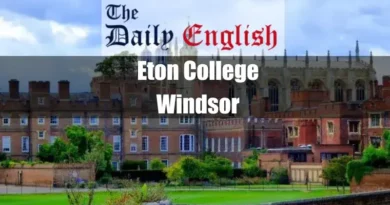On November 20, 1992, a devastating fire broke out at Windsor Castle, the world’s oldest and largest inhabited castle. The fire started in the Queen’s Private Chapel and quickly spread to the Grand Corridor and St. George’s Hall. Firefighters arrived on the scene within an hour, but the fire was already raging out of control.
The fire quickly spread to the Grand Corridor, a long hallway connecting the chapel to the rest of the castle. The corridor was filled with valuable artworks and artefacts, many of which were destroyed in the fire.
I. Timeline of the Windsor Castle Fire 1992

A. 11:15 a.m. to 12:00 p.m.
At 11:15 a.m. on November 20, 1992, a fire broke out in the Queen’s Private Chapel at Windsor Castle. The fire was caused by a faulty spotlight that ignited a curtain. The flames quickly spread through the chapel and into the Grand Corridor.
The fire ignited in the Queen’s Private Chapel at 11:15 a.m. when a curtain caught fire due to a spotlight being pressed against it. At that time, Royal Household agents were present in the chapel, inspecting works of art.
The fire alarm in the castle fire brigade’s watch room, under the supervision of Chief Fire Officer Marshall Smith, was triggered. A light on a grid map of the castle initially indicated the fire’s location at the Brunswick Tower, but soon, flashing lights showed that it had quickly spread to adjacent rooms.
A significant portion of the State Apartments was soon engulfed in flames. Nearby construction workers attempted to extinguish the fire with fire extinguishers. As the 30-foot-long curtains eventually fell to the floor and continued to burn, those present hurriedly started removing paintings from the chapel.
St. George’s Chapel at Windsor Castle in History & Today
The blaze was detected sometime between 11:20 and 11:30 in the morning, probably closer to 11:25 and 11:30, prompting the three individuals to depart from the royal residence’s sanctuary.
At 11:36 a.m., Smith activated a switch to inform the control room at Reading fire station. He then activated the castle’s public fire alarm and called the Royal Berkshire Fire and Rescue Service directly, relaying, “Windsor Castle here; we have a fire in the Private Chapel. Come to the Quadrangle as arranged.” The castle boasted a fire brigade composed of twenty individuals, featuring six dedicated personnel, all furnished with a Land Rover and a pump tender.
They were based in stables two miles south of the castle and arrived at the scene at 11:41 a.m. Fire and Rescue Service vehicles arrived at 11:44 a.m., and by 11:56 a.m., 17 pumping appliances had been requested. In rooms adjacent to the fire, an operation to rescue furniture and artworks involving castle staff, construction workers, and one of the Queen’s sons, Prince Andrew, was initiated.
- Also, read Windsor Castle Opening Times: Everything You Need to Know.
- Also, read Things to Do in London on Christmas.
B. 12:00 p.m. to 03:00 p.m.
By 12:12 p.m., there were 20 fire engines on site, and by 12:20 p.m., the count had risen to 35. Over 200 firefighters had arrived from London, Buckinghamshire, Surrey, Oxfordshire, and Berkshire. David Harper, Deputy Chief Fire and Rescue Officer of the Fire and Rescue Service was leading the fire incident response, while Chief Officer Garth Scotford was out of the country on vacation.
At 12:20 p.m., the fire had extended to St George’s Hall, the largest of the State Apartments, which served as a banqueting hall. The number of fire vehicles had reached 39, with 225 firefighters present. Hoses were directed at all parts of the building surrounding the fire. To put the fire’s scale in perspective, there had been just one incident involving 30 fire appliances in Greater London since 1973.
By 1:30 p.m., tradesmen had created firebreaks at the southern wall of the Green Drawing Room and the northwest corner of Chester Tower, where it joins the Grand Corridor. By this time, firefighters had begun to bring the fire under control, although the roof of the State Apartments had started to collapse.
- Also, read Windsor Castle Tickets: A Proven Comprehensive Guide.
- Also, read Kingston upon Thames.
C. 03:00 p.m. to 02:30 a.m.

At 3:30 p.m., the floors of the Brunswick Tower collapsed, and firefighters had to withdraw to locate three individuals briefly temporarily lost in the smoke. They withdrew again when part of the roof collapsed as well.
- By 4:15 p.m., the Brunswick Tower fire had rekindled. As night fell, the tower was fully engulfed in flames, reaching heights of up to 50 feet (15 meters) by 6:30 p.m.
- At 7:00 p.m., the roof of St George’s Hall eventually collapsed.
- By 8:00 p.m., after burning for nine hours, the fire was brought under control. However, it continued to burn for an additional three hours.
- By 11:00 p.m., the primary fire was extinguished.
- By 2:30 a.m., the last remaining secondary fires were put out.
- Also, read Windsor Castle Changing of the Guard: Where History Coming Alive.
- Also, read River Thames – An Ultimate Guide to Thames River.
D. Further Events
Pockets of fire persisted into the early morning hours, approximately 15 hours after the initial ignition. Sixty firefighters with eight fire vehicles remained on duty for several days. The fire had rapidly spread due to the large empty spaces and gaps in the roof.
A total of 1.5 million gallons (7 million litres) of water from various sources, including the mains water supply, a reservoir-fed hydrant, a swimming pool, a pond, and the nearby River Thames, were used to combat the blaze.
The fire raged for over 15 hours, consuming 115 rooms and causing an estimated £37 million in damage. The Brunswick Tower, which contained many of the castle’s most valuable artworks, was completely destroyed.
According to witnesses, the fire started with a small flicker in the chapel’s sanctuary. The flames quickly grew in size and intensity, and within minutes, the entire chapel was engulfed in smoke and flames.
One witness, a castle employee named John Smith, described the scene as “hell on earth.” He said the smoke was so thick that it was difficult to breathe, and the heat was so intense that it felt like his skin was melting.
Another witness, a tourist named Mary Jones, said she saw the fire from a distance and immediately rushed to help. When she arrived at the chapel, she saw people running out of the building, coughing and choking. She also saw flames shooting out of the windows and smoke billowing into the sky.
It is unknown who exactly saw the fire started, but it is believed that a castle employee first noticed it. The employee immediately called the fire department, but the fire had already spread to the Grand Corridor when the firefighters arrived.
The fire had a devastating impact on Windsor Castle. Many of the castle’s most important rooms and artworks were destroyed. The fire also caused significant damage to the castle’s infrastructure, including its electrical system and plumbing.
However, the fire also had a positive impact in some ways. It led to a major renovation of the castle, which made it safer and more accessible to the public. The fire also raised awareness of the need to protect the castle’s historic heritage.
- Also, read The Windsor Castle Fire Salvage Operation 1992.
- Also, read Exploring Buckingham Palace to Windsor Castle Journey.
- Also, read How Far is Windsor Castle from Buckingham Palace? Royal Mile?
II. Aftermath of the Windsor Castle Fire 1992

The fire had a devastating impact on Windsor Castle, both physically and emotionally. The Queen was deeply saddened by losing so much of her family’s history. However, she was also determined to rebuild the castle and make it even more beautiful than before.
The restoration of Windsor Castle took five years and cost over £37 million. The castle was reopened to the public in 1997 and remains one of the most popular tourist attractions in the United Kingdom.
- Also, read Restoration of Windsor Castle after Devastating Fire in 1992.
- Also, read Windsor Castle Tour: A Comprehensive and Best Guide.
- Also, read Windsor Castle Tickets Advantage Card: Know Everything.
The Windsor Castle fire also led to several important safety changes. The castle’s fire detection and suppression systems were upgraded, and new fire escapes were installed. The castle also began a new fire safety education program for its staff and visitors.
The Windsor Castle fire of 1992 was a tragedy, but it also led to positive changes. The castle is now safer and more accessible than ever before and remains a symbol of British history and culture.
III. FAQs
1. What was the most iconic artwork to be destroyed in the fire?
The most iconic artwork to be destroyed in the fire was the Raphael Cartoons, a set of seven tapestries designed by the Italian artist Raphael. Pope Leo X commissioned the tapestries in the early 16th century, and the British royal family highly prized them.
2. What was the most challenging aspect of restoring the castle?
The most challenging aspect of restoring the castle was repairing the damage to the Brunswick Tower. The fire severely damaged the tower, and its walls were in danger of collapsing. Engineers had to carefully dismantle and rebuild the upper sections to repair the tower.
3. What new safety measures were implemented at the castle after the fire?
After the fire, several new safety measures were implemented at the castle, including installing new fire detection and suppression systems. The castle also hired additional security guards and firefighters.
4. What was the most heartwarming story to come out of the fire?
One of the most heartwarming stories to come out of the fire was the story of the castle’s fire brigade. The fire brigade comprised castle employees who volunteered their time to fight the fire. The fire brigade worked tirelessly for over 15 hours to bring the fire under control. The Queen and the public alike praised their bravery and dedication.
5. What was the one thing the Queen wanted to save from the fire?
According to BBC.co.uk, the Queen was most concerned about saving the royal archives, which were located in a section of the castle that was not damaged by the fire. The royal archives contain centuries of important documents and artefacts, and the Queen was determined to protect them.
6. What did the public do to help restore the castle?
The public responded to the fire with an outpouring of support. People from all over the world sent messages of condolence and donations to help restore the castle. The public donated over £37 million, enough to cover the restoration cost.
7. What was the most unusual item to be found in the rubble of the fire?
One of the most unusual items to be found in the rubble of the fire was a medieval skeleton. The skeleton was found in the ruins of the Brunswick Tower, and it is believed to be the remains of a castle worker who was killed in a fire in the 14th century.
8. What was the most lasting impact of the fire?
The most lasting impact of the fire was the change in public perception of the royal family. Before the fire, the royal family was often seen as aloof and out of touch with the public. However, how the Queen and the royal family responded to the fire and the public support they received helped humanize the royal family and make them more relatable to the public.










Comments are closed.